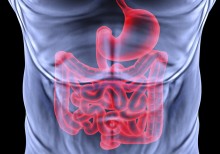 We have trillions of micro- organisms that live on and in the body and are an essential part of helping us create nutrients and even defending the body from other harmful bacteria, viruses and toxins. The largest colonies of these microbes live in the gut. We have about 1.5-2 kg of gut bacteria!
We have trillions of micro- organisms that live on and in the body and are an essential part of helping us create nutrients and even defending the body from other harmful bacteria, viruses and toxins. The largest colonies of these microbes live in the gut. We have about 1.5-2 kg of gut bacteria!
The bacteria are actually highly organised and form a well ordered world in which they can mobilise defences, create vitamins and nutrients and keep the digestion healthy.
The gut micro-flora (small living organisms) can be divided into three groups:
- Essential or beneficial forms
- Opportunistic forms who can cause problems if they get out of control and take the opportunity to grow. An example would be when we eat lots of sugar and the yeast Candida Albicans grows and takes over more area than it should.
- Transitional forms – these are simply passing through the gut from the foods we eat or water we drink. When the gut is well protected by beneficial bacteria this form of bacteria goes through the gut without causing any harm. These forms can cause problems if the beneficial bacteria are not functioning.
Under essential or beneficial bacteria we have species like Bifidobacteria, Lactobacteria, Propionobacteria, some strains of E.coli, Peptostreptococci and Enterococci. These bacteria do a whole lot of great work in our bodies!
Our healthy digestive tract has a coating where these beneficial bacteria form a very healthy thick layer that protects us from harmful bacteria, toxins, undigested food and parasites. It contains really healthy bacterial species and a thick organised mucus protection layer.
As well as a physical barrier the beneficial bacteria work against invading disease causing micro-organisms by actually producing antibiotic-like substances, anti-viral substances, anti-fungal substances; including interferon, lizocym and surfactins – chemicals that dissolve membranes of viruses and bacteria and help destroy them.
Unhealthy microbes produce a lot of potent toxins and our healthy gut bacterial colonies can neutralise toxins from these bacteria as well as any toxins in the food or drink we ingest. They even can inactivate histamine (allergy causing substance) and help remove heavy metals like lead and mercury.
The healthy bacteria cell walls absorb many carcinogenic (cancer causing) substances making them inactive. The healthy bacteria suppress cancer growing processes in the gut like polyps.
If you don’t have this gut protective layer because of antibiotics too many times or poor gut health; you can get chronic low grade or very obvious inflammation. Species like Candida albicans, various bacteria (streptococcus), viruses (like measles), parasites and toxins can damage the digestive system and cause this inflammation.
If the protective layer of healthy bacteria attached to the gut wall breaks down the opportunistic bacteria can overgrow and invade the gut cells and cause inflammation as seen in inflammatory bowel disease under microscope and bacterial cultures.
The beneficial bacteria also digest the foods into substances that can be used to nourish the gut wall cells themselves. Thus the gut wall becomes malnourished if there are no healthy gut bacteria to nourish and protect it. This in turn upsets our ability to digest and absorb nutrients for the rest of the body.
Dr Natasha Campbell-McBride’s Gut & Psychology Syndrome (GAPS) book goes into more detail on this and makes for an interesting read. If you’d like to restore your gut bacteria look into foods that help heal the gut, cultured foods (kefir, sauerkraut, cultured yoghurts) that restore healthy bacteria and read about how to help stop overgrowth of the wrong kinds of bacteria and yeasts using the principles of the GAPS or Body Ecology diet.
I’ll go over more of these principles in future articles.
